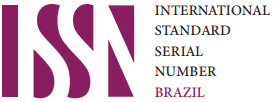Repercussões do cyberbullying na saúde mental dos adolescentes
DOI:
https://doi.org/10.25118/2763-9037.2015.v5.171Palavras-chave:
Internet, adolescente, violência, saúde mentalResumo
Considera-se cyberbullying quando um ou mais indivíduos utilizam os meios eletrônicos com a intenção de agredir, infligir injúria ou desconforto, humilhar, causar medo ou sensação de desespero no indivíduo que é alvo das agressões. Essas ações podem ser feitas via e-mail, salas de bate-papo, telefones celulares, mensagens instantâneas, cabines de votação online. As evidências indicam que 20-40% dos adolescentes terão pelo menos uma experiência com cyberbullying e que o número de cybervítimas está aumentando. O principal dano causado pelo cyberbullying é o de prejudicar a reputação da vítima, com repercussões que podem ser ainda maiores do que aquelas observadas no bullying tradicional. A vitimização relacionada ao cyberbullying está associada a problemas sociais e de comportamento, incluindo sintomatologia depressiva, abuso de substâncias psicoativas, tentativas de suicídio e suicídio, constituindo-se assim em problemas significativos para a saúde mental dos adolescentes.
Downloads
Métricas
Referências
Schouten AP, Valkenburg PM, Peter J. Precursors and underlying processes of adolescents’ online self-disclosure: developing and testing an “Internet attribute-perception” model. Media Psychol. 2007;10:292-315. DOI: https://doi.org/10.1080/15213260701375686
Valkenburg PM, Peter J. Online communication among adolescents: an integrated model of its attraction, opportunities, and risks. J Adolesc Health. 2011;48:121-7. DOI: https://doi.org/10.1016/j.jadohealth.2010.08.020
Valkenburg PM, Peter J. Social consequences of the internet for adolescents: a decade of research. Curr Dir Psychol Sci. 2009;18:1-5. DOI: https://doi.org/10.1111/j.1467-8721.2009.01595.x
Comitê Gestor da Internet no Brasil. TIC domicílios e empresas 2011 [Internet]. Pesquisa sobre o uso das tecnologias de informação e comunicação no Brasil. 2012 [cited 2013 Feb 20]. http://op.ceptro.br/cgi-bin/cetic/tic-domicilios-e-empresas-2011.pdf
Slonje R, Smith PK. Cyberbullying: another main type of bullying? Scand J Psychol. 2008;49:147-54. DOI: https://doi.org/10.1111/j.1467-9450.2007.00611.x
Tokunaga RS. Following you home from school: a critical review and synthesis of research on cyberbullying victimization. Comput Human Behav. 2010;26:277-87. DOI: https://doi.org/10.1016/j.chb.2009.11.014
Ybarra ML, Mitchell KJ, Wolak J, Finkelhor D. Examining and associated distress related to Internet harassment: Findings from the Second Youth Internet Safety Survey. Pediatrics. 2006;118:e1169-77. DOI: https://doi.org/10.1542/peds.2006-0815
Bottino SMB, Gomez CR, Correa VLA, Ribeiro WS. Relações entre cyberbullying e problemas de saúde mental em adolescentes. Cad Saude Publica. 2014. In press.9. Buhrmester D, Prager K. Patterns and functions of self-disclosure during childhood and adolescence. In: Rotenberg KJ, ed. Disclosure processes in children and adolescents. Cambridge: Cambridge University Press; 1995. p. 10-56. DOI: https://doi.org/10.1017/CBO9780511527746.002
Davis K. Coming of age online: the developmental underpinnings of girls’ blogs. J Adolesc Res. 2010;25:145-71. DOI: https://doi.org/10.1177/0743558409350503
Schmitt KL, Dayanim S, Matthias S. Personal homepage construction as an expression of social development. Dev Psychol. 2008;44:496-506. DOI: https://doi.org/10.1037/0012-1649.44.2.496
Instituto Brasileiro de Opinião Pública e Estatística (IBOPE). Gerações Y e Z: juventude digital [Internet]. [cited 2014 Aug 2]. http://www4.ibope.com.br/download/geracoes%20_y_e_z_divulgacao.pdf
Instituto Brasileiro de Geografia e Estatística (IBGE). Pesquisa Nacional por Amostra de Domicílios (PNAD) [Internet]. 2011 [cited 2015 Jan 19]. http://www.ibge.gov.br/home/estatistica/populacao/trabalhoerendimento/pnad2011/
Spizzirri RCP, Wagner A, Mosmann CP, Arman AB. Adolescência conectada: mapeando o uso da internet em jovens internautas. Psicol Argum Curitiba. 2012;30:327-35. DOI: https://doi.org/10.7213/psicolargum.v30i69.23288
Fundo das Nações Unidas para a Infância (UNICEF). O uso da internet por adolescentes [Internet]. 2013 [cited 2014 Jul 26]. http://www.unicef.org/brazil/pt/br_uso_internet_adolescentes.pdf
Council on Communications and Media. Children, adolescents, and the media. Pediatrics. 2013;132:958-61. DOI: https://doi.org/10.1542/peds.2013-2656
Olweus D. Bullying in school: what we know and what we can do. Oxford: Blackwell; 1993.
Menesini E, Nocentini A, Palladino BE, Frisén A, Berne S, Ortega-Ruiz R, Calmaestra J, Scheithauer H, et al. Cyberbullying definition among adolescents: a comparison across six European countries. Cyberpsychol Behav Soc Netw. 2012;15:455-63. DOI: https://doi.org/10.1089/cyber.2012.0040
Kowalski RM, Limbert SP. Electronic bullying among middle school students. J Adolesc Health. 2007;41:S22-S30. DOI: https://doi.org/10.1016/j.jadohealth.2007.08.017
National Housing Corporation (NCH). Putting U in the picture – Mobile phone bullying survey [Internet]. 2005 [cited 015 Jan 19]. http://www.avaproject.org.uk/media/28482/mobile_bullying_report.pdf
Nocentini A, Calmaestra J, Schultze-Krumbholz A, Scheithauera H, Ortegaa R, Menesini E. Cyberbullying: labels, behaviours and definition in three European countries. Austr J Guid Couns. 2010;20:129-42. DOI: https://doi.org/10.1375/ajgc.20.2.129
Ortega R, Elipe P, Mora-Merchan JA, Genta ML, Brighi A, Guarini A, et al. The emotional impact of bullying and cyberbullying on victims: a European cross-national study. Aggress Behav. 2012;38:342-56. DOI: https://doi.org/10.1002/ab.21440
Wang J, Nansel TR, Iannotti RJ. Cyber and traditional bullying: differential association with depression. J Adolesc Health. 2011;48:415-7. DOI: https://doi.org/10.1016/j.jadohealth.2010.07.012
Litwiller BJ, Brausch AM. Cyber bullying and physical bullying in adolescent suicide: the role of violent behavior and substance use. J Youth Adolesc. 2013;42:675-84. DOI: https://doi.org/10.1007/s10964-013-9925-5
Hinduja S, Patchin JW. Bullying, cyberbullying and suicide. Arch Suicide Res. 2010;14:206-21. DOI: https://doi.org/10.1080/13811118.2010.494133
Pérez C, Astudillo J, Varela TJ, Lecannelier FA. Evaluación de la efectividad del Programa Vínculos para la Prevención e Intervención del Bullying en Santiago de Chile. Psicol Esc Educ. 2013;17:163-72. DOI: https://doi.org/10.1590/S1413-85572013000100017
Hui EKP, Tsang SKM, Law BCM. Combating school bullying through developmental guidance for positive youth development and promoting harmonious school culture. Sci World J. 2011;11:2266-77. DOI: https://doi.org/10.1100/2011/705824
Bostic JQ, Brunt CC. Cornered: an approach to school bullying and cyberbullying, and forensic implications. Child Adolesc Psychiatr Clin N Am. 2011;20:447-65. DOI: https://doi.org/10.1016/j.chc.2011.03.004
Downloads
Publicado
Como Citar
Edição
Seção
Licença

Este trabalho está licenciado sob uma licença Creative Commons Attribution-NonCommercial 4.0 International License.
Debates em Psiquiatria permite que o (s) autor (es) mantenha(m) seus direitos autorais sem restrições. Atribuição-NãoComercial 4.0 Internacional (CC BY-NC 4.0) - Debates em Psiquiatria é regida pela licença CC-BY-NC
































